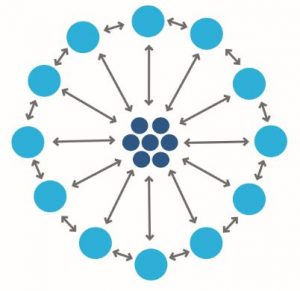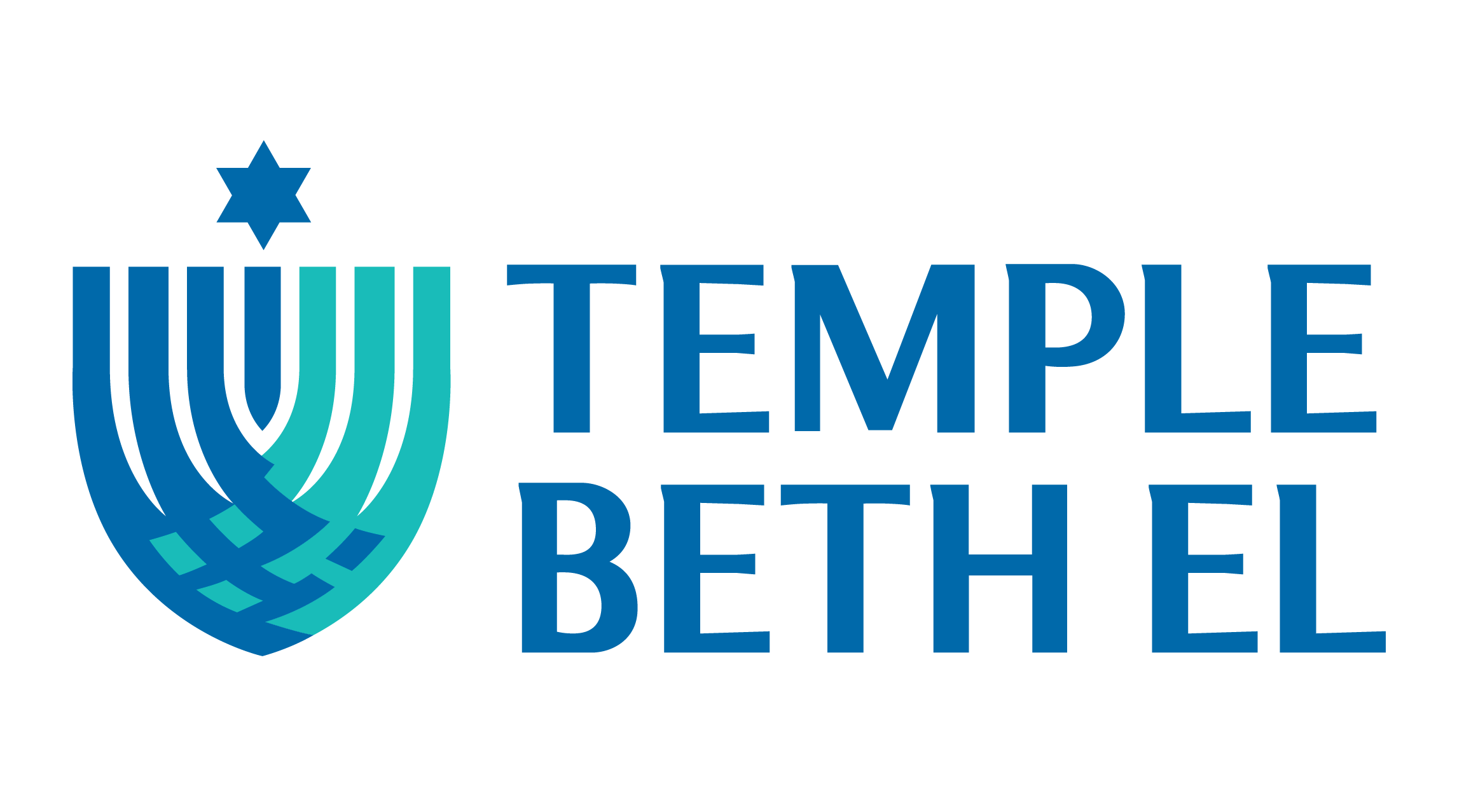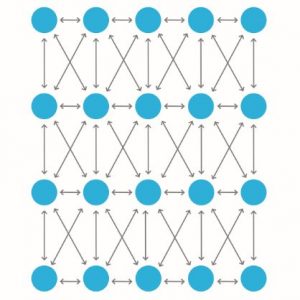With gratitude to Rabbi Leah Citrin for her thought partnership, Rabbis Asher Knight and Susan Landau for their editing, and Rabbi Judy Schindler and Cantor Mary Thomas for their contributions. Thanks, also, to Kayla Piscatelli for creating the graphics!
Everything I know about community, I learned at temple. I grew up in a synagogue that wrapped itself around me at a time in my childhood when school could not provide that sense of community.
There was Neil, the cool college kid, who spent entire onegs swinging me around by my arms until my feet lifted off of the ground. Or Esther, who snuck me sugar cubes in the middle of services when I went poking around looking for oneg cookies. There was Kim, who befriended my 10-year-old self, despite our age difference, and included me in her wedding as a flower girl. And there was Arlene, my religious school teacher, who helped my mom and my sister design the tallit I wore when I became a bat mitzvah.
My sense of community and my connection to Judaism is in large part due to Arlene and Kim and Esther and Neal – and my parents, who chose to engage with the Jewish community, who modeled what it meant to show up – for services, for shiva minyans, for holidays – and who always encouraged and supported my involvement in the Jewish community.
I imagine many of you have stories like this, people who have touched your lives over the years and helped shape you into the person you are, moments that have shown you what community looks and feels like.
We all want to feel connected; to know that no matter what, we have a community backing us, lifting us, supporting us.
But we don’t always succeed in creating those connections for ourselves, or others.
None of the people I named earlier, none of the folks who helped shape my Jewish community, were my age; for a long time, I didn’t have friends my age. My mom calls me an old soul, which I continue to take as a compliment. But my “old soul” status also means that while I craved connection with my peers, as a kid, I often didn’t know how to relate.
Building connections takes courage, and for some, a little bit of exposure therapy – we have to do the things that scare us or make us uncomfortable, over and over again; we have to show up not just once, but four to five times, in order to build even the base of the connections we seek.
We live in a busy world. We all have so many things that compete for our time and energy.
It can be hard to show up, and then show up again, and again. And what’s more, intentionally exposing ourselves to uncomfortable situations may seem somewhat counter-intuitive.
And yet, that exposure therapy is the reason I stand here today; eighteen years ago, in cahoots with my parents, my rabbi coaxed me into youth group and encouraged me to keep showing up until I fell in love with doing Judaism alongside other teens. And it worked.
For some here at temple, connection feels fleeting, or overwhelming. Maybe you feel like you don’t know anyone here – or don’t know anyone anymore. Or perhaps you struggle to find the place where you can fit in and get involved. And many of you have told me that when you look around, you don’t see people like you – everyone is older, or younger, or married, or has kids. At times, each of us feels disconnected.
That feeling of disconnection is real, and it is not limited to our interactions at temple. We have become increasingly disconnected from our neighbors, our coworkers, and even our friends and family. America values individualism more highly than any other country in the world. And there are benefits to prioritizing oneself: Studies show that wealth and education levels are higher in countries that value individualism. Yet, as I spoke about last year, choosing “me” over “we” has its drawbacks. When we consistently choose “me”, we create little one-person islands for ourselves; islands where we are in charge. And being in charge can be great. But those one-person islands can get pretty lonely.
Judaism stands in contrast to American individualism. We are commanded to pray in community, celebrate in community, and mourn in community.
And as Rabbi Rachel Timoner teaches, whether we feel it or not, on a basic level, we are all connected. In her book “Breath of Life,” Rabbi Timoner uses breath to illustrate this sense of connection. She writes of a man sitting in traffic.
“Most certainly this man thinks of his body as separate from the air he breathes. His body is him, he is his body. But his surroundings – the other drivers, the air he breathes – surely these are not him. Yet every three to five seconds he pulls these surroundings into himself [breathe in]. And every three to five seconds he pushes back into the space around him the elements released by his cells [breathe out]…because the air is absorbed into his blood and then cells, he is partially made of these surroundings.”
We are all made of the air we breathe. We are all made of each other. We are all connected.
And what’s more, Judaism teaches that the deeper connections we make, the stronger we become.
In the words of Kohelet, “Two are better than one, for they have greater benefit from their earnings. For if they fall, one can raise the other; but woe to the one who falls and has no partner to lift them. Also, if one attacks, two can stand up to the attacker. [And] a three-fold cord is not readily broken.”
Two are stronger than one, yes – but three are even stronger. In building connections, we take the individual strands of our lives and braid them together. The thicker the braid, the stronger the cord.
Torah describes the building of the Mishkan – the Tabernacle – in detail. The mishkan was a portable synagogue – a massive, mobile structure made up of materials gathered and shaped by many individuals. It was intricate and complex. And yet, at the conclusion of the description, we read the words: “and it came to pass that the Tabernacle was one.”
How could that be so?
According to one commentary, “In building the Tabernacle, the entire Israelite community was joined in their hearts; no one felt superior to his fellow. At first, each person completed their own part of the construction… Only afterwards could they all see how their individual contributions to the building of the Tabernacle fit together perfectly, as if one person had done it all. Then they realized how each one of them had depended on the other…”
Our Temple Beth El tabernacle is braided together by people, by the Kims and Neils and Arlenes of the world. We are all connected, and those connections strengthen us.
In our social justice and TriBE community building work here at temple, we have been talking about two different models of what that connection can look like.
 I invite you to look at the screen. We call this the ‘wheel’ model. In this model, a few people at the center “hold” the vast majority of the relationships. Whatever happens in that very small center deeply affects the whole. Those along the wheel are only able to make one or two other connections with others. Take out the leaders in the middle, and nearly every tie is broken. We are all connected, but we are connected in such a way that relies on a few people, which actually leaves many of us very far apart.
I invite you to look at the screen. We call this the ‘wheel’ model. In this model, a few people at the center “hold” the vast majority of the relationships. Whatever happens in that very small center deeply affects the whole. Those along the wheel are only able to make one or two other connections with others. Take out the leaders in the middle, and nearly every tie is broken. We are all connected, but we are connected in such a way that relies on a few people, which actually leaves many of us very far apart.
This second model is called the ‘fabric’ model. Here, each person is connected to multiple people. There are still leaders, and some people are, indeed, connected to more people than others may be. But there is no one small group of people holding all of the threads. This model builds strength into the fabric woven by the community. When one person falls, there are seven or eight there to help lift her up. We all feel when something tugs at the fabric, and so the entire community becomes responsible for helping support and celebrate each other.
We are all connected, and the more we connect, the more connected we will feel.
This community will become the community we want it to be.
If we want to be warm and welcoming, we must model warm welcome. Tonight, you were welcomed by one of the members of our board of directors. What might it look like if we had congregants volunteering to welcome each other every Shabbat and at congregational events?
During these High Holy Days, there are 140 individual opportunities to serve as ushers. From what our head usher has told me, 42 people are somehow filling all of those slots.
What might it look like to have so many people willing to usher that we run out of slots?
If we want people to celebrate our joys with us and to sit with us in sorrow, we must be willing to reach out to those celebrating joy, we must be willing to show up for those in sorrow. Our caring committee, Hineynu: We are Here, recently began imagining new ways we might expand our opportunities to care for each other, congregant to congregant.
What might it look like to have a volunteer core always on deck to reach out to fellow congregants in both tough and triumphant times?
If we want this community to be a light unto the nations, we must be the ones to shine that light. Our social justice and action initiatives continue to bring light to inequity throughout Charlotte – how much brighter could that light be if our entire congregation stood up for justice together?
Many of us here have built connections at temple, on Israel trips and congregational retreats, through participation in TriBEs, or youth group or SPICE or the Porch, in religious school or by becoming involved with community organizing. Some of us are here every Friday night, in person or via livestream, and ALL of you are here tonight – thank you, for being here.
If we are to weave a congregational fabric strong enough to combat the inherent loneliness of our individualistic society, if we are to build connection into the very fibers of our community, we will need to weave together.
So; where have you found connection, and what kind of connections are you looking to build, or strengthen?
Tomorrow night when the sun sets and Rosh Hashanah ends, each Temple Beth El family will receive an email with a link – I hope you will open the email and click on the link.
When you do, you will find a questionnaire asking you to take part in helping weave the social fabric that will tie together our Temple Beth El Tabernacle. I promise we won’t ask you to make any tent pegs or sew any grommets – but we will ask you to tell us where you feel best suited to play a role.
Before the Israelites come together, before they braid the three-fold cords of connection that allow them to build the Tabernacle, God explains the need for a tabernacle in the first place: “Vasu li mikdash, v’shachanti b’tocham – make for me a sanctuary, that I might dwell among them.”
Tonight, as we move into 5780, may we reflect on the connections that have helped make us who we are, ponder the places where we might help to build new braids, and choose to strengthen the fabric of our community.
Then, God will surely dwell among us.





2 Responses
Fantastic sermon!! Your description of a sense of disconnection perfectly captures the way I’ve felt when I’ve gone to services. (Not due to any deficiency at the Temple: I’m a bit on the quiet side and find it hard to overcome the feeling of being adrift in a large group.) It’s wonderful to see a Temple with the self-awareness to realize this is an issue and then figuring out how to address it. I joined one of the TriBEs when they started up and just submitted the volunteer form the e-mail about your sermon included a link to.
Rabbi Klass,
Just read your sermon as Merridith and I were traveling home late Sunday from our son’s home in Indiana. It was very nice and thought provoking. After 20 plus years of work travel that took me out of Charlotte 2 or 3 nights weekly, I’ve decided in retirement to now get more involved in Temple. Though uncomfortable at first, with that feeling of uncertainty and “do I belong here”, I have forged ahead into Brotherhood activities, ushering, 2 TriBE groups. I am feeling very much more part of the fabric of the Temple community. So, I really related to your sermon’s messages. Thanks and I will be filling out the questionnaire you sent out as well…Howard.